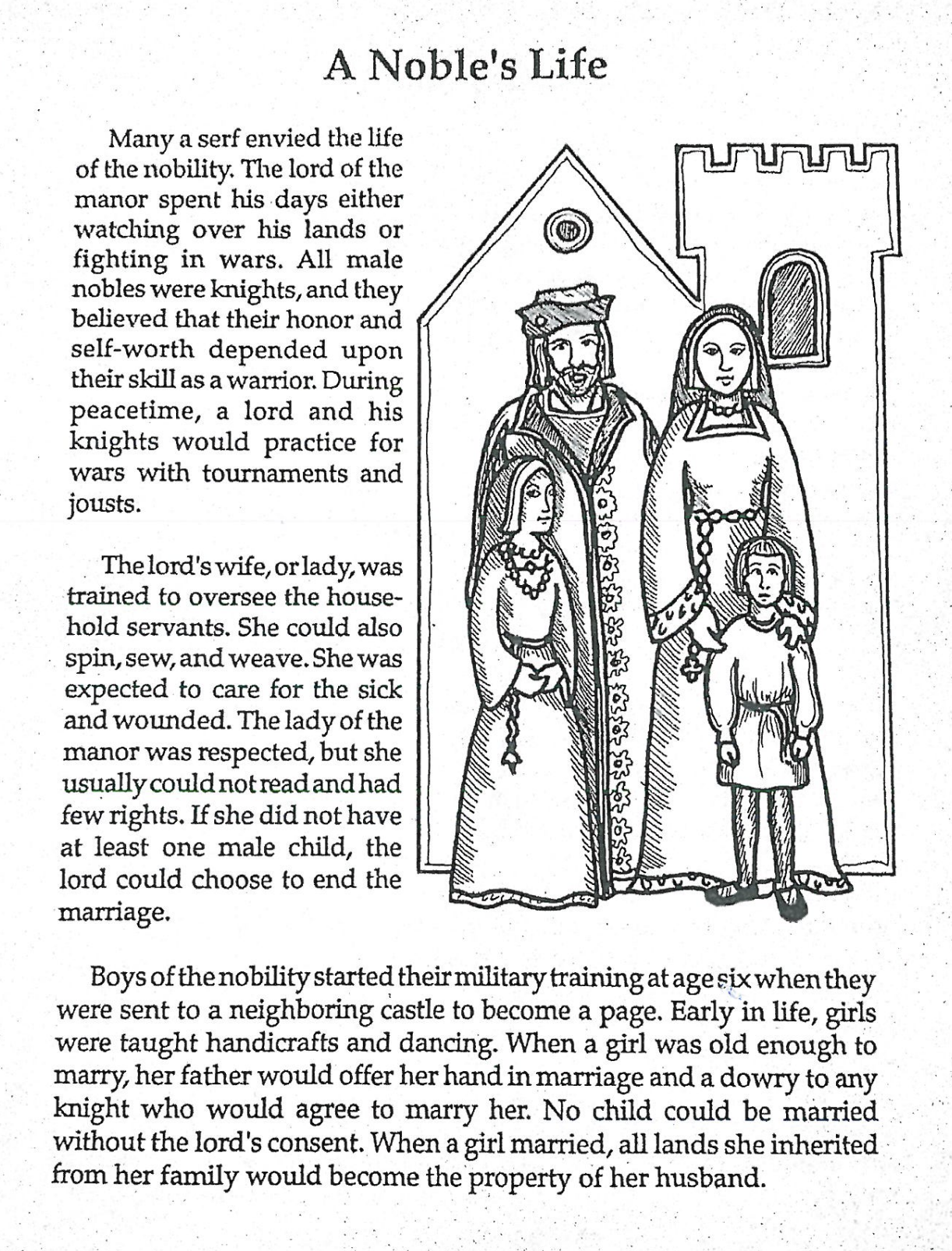Intro Notes & Discussion
Medieval Vocabulary
Click HERE to download a PDF of THE MIDDLE AGES Text/Reading
Please define the following terms using the reading…
Feudalism -
Nobles -
Fiefs-
Vassals-
Knights-
Chivalry-
Manors-
Serfs-
Clergy-
Cathedrals-
Crusades-
CLICK HERE to download a Guided Note/Medieval Vocab PDF
Medieval TimeS in Europe
Read & Write
Medieval Times in Europe - READ
Medieval is an adjective used to describe anything related to the Middle Ages. It comes from two Latin words, medius and aevum (ay-vum), meaning “middle” and “age.” The medieval time period is most often viewed as starting around 476 A.D., after the fall of the Western Roman Empire, and ending around 1500 A.D. The term was created by historians after the time period to refer to the time period between ancient times and modern times after the Renaissance began around 1500 A.D. The Early Middle Ages – sometimes called the Dark Ages – were, generally speaking, a dangerous period of time. After the fall of the Western Roman Empire, Germanic tribes set up kingdoms throughout the previous Roman territory. The Germanic tribes were often at war with each other, so the kingdoms were poorly run. People in the kingdoms had to often deal with attacks by raiders who stole their food, tools, livestock and other valuable materials. Vikings became well-known and feared for these types of raids for hundreds of years in Europe during the Early Middle Ages. Trade stopped in many areas because robbers would attack merchants as they traveled through the countryside with their goods. Because trade declined, towns and villages fell apart. Another reason this time period is viewed as the “Dark Ages” is because people were not interested in learning, and many Ancient Greek and Roman books were lost or destroyed. Because of the lack of central government, a constant threat of war, and the increase of starvation, the less powerful in society became dependent on those with power. Because of these problems, a new type of government system, known as feudalism (few-da-lism), developed. Feudalism began with weak kings dividing their lands into sections, called fiefs (feefs). They then granted the fiefs to important nobles so that they could rule the lands for them and protect the people who lived there, since the kings were unable to do so. In return, the nobles who received the fiefs promised to be loyal to the king and to provide them with warriors during times of war. Nobles typically divided their fief into smaller ones and gave them to less important nobles in exchange for the same loyalty and military service. Ultimately, the feudal system gave the less powerful the assurance that they could depend on their more powerful neighbors for assistance in times of need. Another characteristic of the Middle Ages was the importance of the Church. Almost everyone in Western Europe, who was left from the Roman Empire, followed Christianity. This meant the Church’s power was great and continued to have influence during the Middle Ages. Over time, popes sent missionaries to convert others to Christianity.
Sometimes this time period is called the “Age of Faith.” Because the Middle Ages covered such a long time span, there were many changes over the years. An important development was the growth of towns and re-establishing order in society after the fall of the Roman Empire. During the Early Middle Ages, there was little urban (city) life. Many of the towns that had existed during the years of the Roman Empire had disappeared. During the height of the feudal age there were three main social classes:
1) the clergy – church officials, 2) the nobles – the wealthy, and 3) the peasants – poor farmers and workers. With the rise of towns, however, came a fourth class: the burgesses, or townspeople. This is comparable to the ‘middle class.’ As this new class gained power, the importance of feudalism and the strength of the nobles began to weaken. Kings often found support among the middle class, who favored a more lasting form of government. You might say that the growth of medieval towns marked the first step towards the birth of countries and formation of Western Europe similar to the one we know today.
Medieval Times in Europe - WRITE
Please respond the the “Medieval Times in Europe Questions” page in your Medieval Packet…responses should be in complete sentences!
CLICK HERE To download a PDF of Medieval Times in Europe Reading/Questions
Daily Life in Medieval EUrope
CLICK HERE to download a PDF of the Daily Life in Medieval Europe Activity
Medieval VIDEO REVIEW
Video #1 - Myths of the Middle Ages - Ted Talk
Video #2 - What if I lived in the Middle Ages
Video #3 - What is a Castle Intro Video (4 min)










